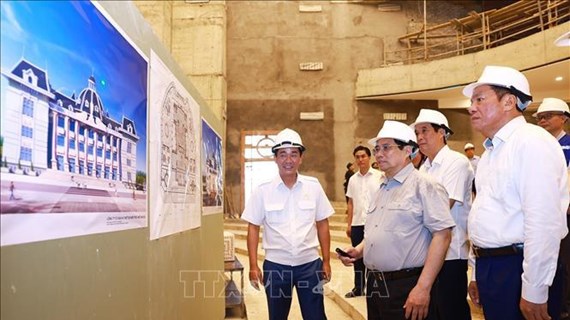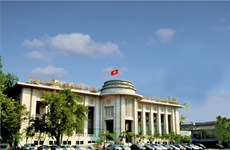Tourism sector prioritises sea, island visits
Sea and island tourism development was the top priority of Vietnam’s
tourism sector and attached with ensuring security and defence in the
context of the national socio-economic development, affirmed General
Director of the Vietnam National Administration of Tourism Nguyen
Van Tuan.
Sea and island tourism development was the top priority of Vietnam’s
tourism sector and attached with ensuring security and defence in the
context of the national socio-economic development, affirmed General
Director of the Vietnam National Administration of Tourism (VNAT) Nguyen
Van Tuan.
Tuan said that under the sea and island development scheme devised by VNAT for the 2011-2020 period, Vietnam will have five sea tourism areas by 2020, including the Ha Long-Cat Ba area, along with Lang Co-Son Tra-Hoi An, Nha Trang-Cam Ranh, Phan Thiet-Mui Ne and Phu Quoc areas.
Other potential sea tourism areas like Van Don and Co To will be further developed and tours to Truong Sa and Hoang Sa archipelagoes will be tapped, he said at a seminar on a master plan for tourism development until 2020 and vision towards 2030 held in Hanoi on June 16.
Deputy Head of the Tourism Development Research Institute Pham Trung Luong said that the southern central coastal region was expected to record the highest tourism growth and the Central Highlands region through boasting a lot of potential for tourism, having the lowest growth rate.
Climate change will challenge the country’s tourism development, particularly in the Mekong delta, he said.
Under the master plan for tourism development for the 2010-2030 period, Vietnam hoped to raise the number of foreign travellers to the nation from around 10.3 million and a turnover of 19 billion USD by 2020, to around 18 million and a turnover of 36 billion USD by 2030.
The tourism sector will prioritise development of northeastern Asia and ASEAN markets, maintain markets in eastern, northern and western Europe and North America, and expand to the Middle East and India .
VNAT reported that the sector welcomed more than 2.5 million foreign arrivals in the first five months of 2011, a year-on-year rise of 18 percent./.
Tuan said that under the sea and island development scheme devised by VNAT for the 2011-2020 period, Vietnam will have five sea tourism areas by 2020, including the Ha Long-Cat Ba area, along with Lang Co-Son Tra-Hoi An, Nha Trang-Cam Ranh, Phan Thiet-Mui Ne and Phu Quoc areas.
Other potential sea tourism areas like Van Don and Co To will be further developed and tours to Truong Sa and Hoang Sa archipelagoes will be tapped, he said at a seminar on a master plan for tourism development until 2020 and vision towards 2030 held in Hanoi on June 16.
Deputy Head of the Tourism Development Research Institute Pham Trung Luong said that the southern central coastal region was expected to record the highest tourism growth and the Central Highlands region through boasting a lot of potential for tourism, having the lowest growth rate.
Climate change will challenge the country’s tourism development, particularly in the Mekong delta, he said.
Under the master plan for tourism development for the 2010-2030 period, Vietnam hoped to raise the number of foreign travellers to the nation from around 10.3 million and a turnover of 19 billion USD by 2020, to around 18 million and a turnover of 36 billion USD by 2030.
The tourism sector will prioritise development of northeastern Asia and ASEAN markets, maintain markets in eastern, northern and western Europe and North America, and expand to the Middle East and India .
VNAT reported that the sector welcomed more than 2.5 million foreign arrivals in the first five months of 2011, a year-on-year rise of 18 percent./.













